Torpedoes of the UGST "Physicist" line
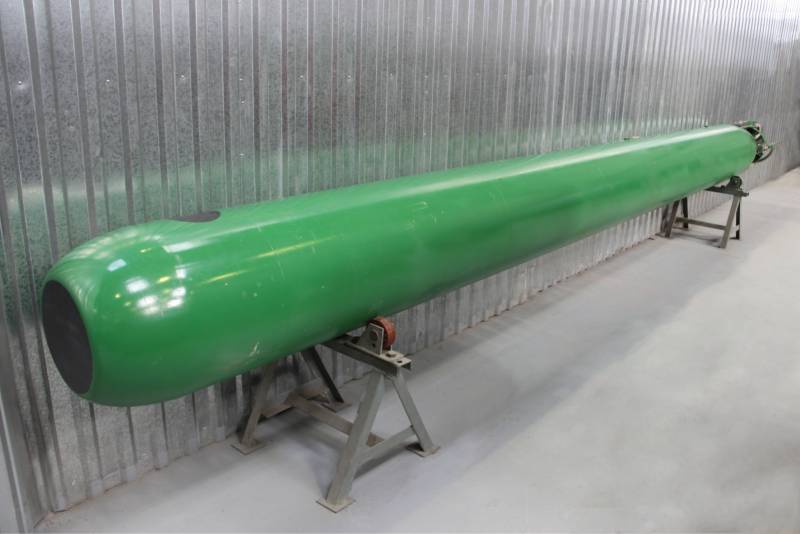
General view of the product UGST "Physicist"
Armed with the naval fleet Russia currently has several 533 mm torpedoes intended for use by submarines and surface ships. One of the latest models in this series is the “universal deep-sea homing torpedo” UGST “Fizik”. It entered arsenals about 20 years ago, but still remains modern weapons with high performance and potential for further development.
On development stage
According to known data, development work with the code “Physicist” started in 1986 by order of the USSR Navy. The Leningrad Research Institute of Marine Thermal Engineering and the State Research and Production Enterprise "Region" (Moscow) were appointed as contractors. It was planned to launch production of serial weapons at the Dagdizel plant (Kaspiysk). Now all these enterprises are part of the Tactical Missile Weapons Corporation.
The goal of the project was to create a new homing 533-mm torpedo for domestic ships and submarines. In terms of its characteristics and combat capabilities, such a product should have been superior to the existing USET-80 torpedo, created several years earlier.
The main design work continued until the mid-nineties, when the development work reached the stage of testing individual torpedo units. In the second half of the decade, full-fledged tests were carried out at sea test sites, as a result of which the UGST “Physicist” product received a recommendation for adoption and serial production.
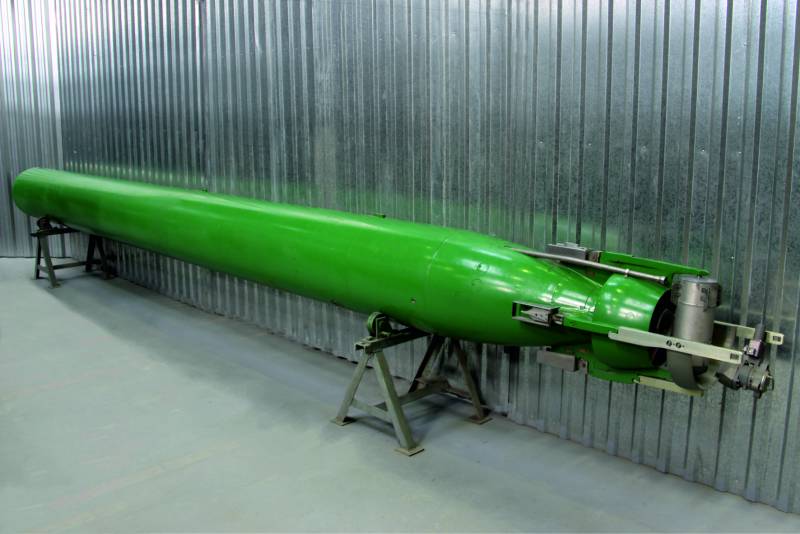
View of the torpedo's tail
The order to accept the “Physicist” into service with the Navy was signed in 2002. At the same time, according to various sources, purchases of such torpedoes began to replenish arsenals. The following year, at the international naval show IMDS-2003, the UGST torpedo was shown to the public and specialists for the first time. For unknown reasons, on the second day of the event, the most interesting sample was hidden under a cover. However, later “Physicist” regularly appeared at various exhibitions and was demonstrated without any interference.
According to known data, in the first half of the XNUMXs the UGST torpedo went into production, and deliveries of products to the fleet began. At the same time, the number of ordered products and their cost, for obvious reasons, are not disclosed. In addition, manufacturers were counting on export contracts, for which purpose the torpedo was shown at foreign exhibitions.
Development Options
Long before the adoption of the Physicist torpedo into service, development organizations began creating its variants and modifications. By reworking the design and replacing individual units, it was planned to improve the technical, economic or commercial potential of the product.
Thus, in the mid-XNUMXs, the UGST-M torpedo was adopted for service. It replicated the original design as much as possible, but had a different propulsion system. At the same time, the main characteristics remained at the level of the basic “Physics”.
The so-called torpedo for small displacement submarines, intended primarily for export. While maintaining all the main units and functions, it is characterized by reduced length and weight. By reducing the dimensions, they ensured compatibility with 533-mm torpedo tubes of NATO standards.
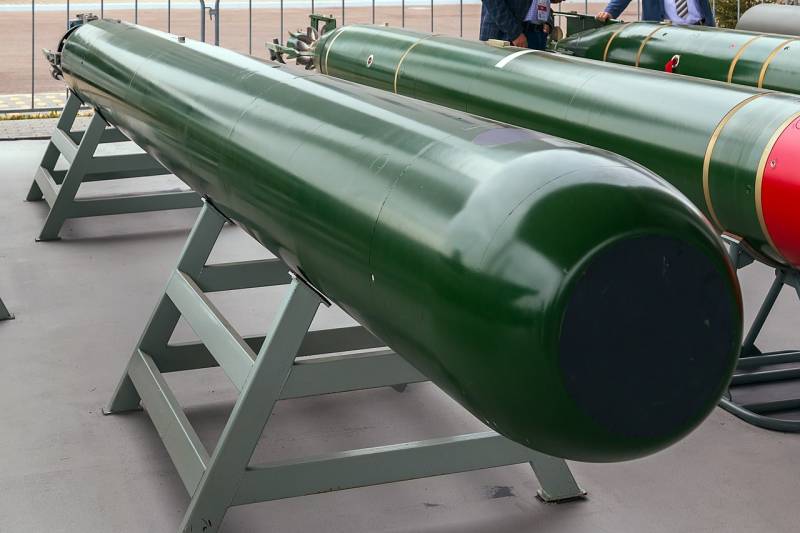
Head part "Physics" with SSN antennas
In the tenth years, KTRV enterprises carried out work on the “Physicist-2” or “Case” project. This torpedo received updated control and homing equipment. We also used a modern power plant with the required level of performance. In 2017, “Futlyar” was adopted by the Russian Navy.
Technical features
The UGST “Physicist” torpedo is built according to the traditional design for such weapons and is practically no different in appearance from other models. The total length of the product is 7,2 m (6,05 m for the short version) with an external diameter of 533 mm. The mass of a basic modification torpedo does not exceed 2,2 tons, “for small displacement submarines” - 1,88 tons.
The Physics internal units are arranged in a traditional way. Under the head fairing there is a homing system, behind which there is a charging compartment. In the center of the hull are the fuel tanks and the propulsion system. The tail compartment is dedicated to control equipment and steering gears.
It was reported that the UGST torpedo was built according to a modular design. It is possible to relatively easily replace all the main units, thereby simplifying the creation of new modifications. These features have already been used in real projects.
Especially for the new torpedo, the Marine Thermal Engineering Research Institute developed an axial piston combined-cycle engine APD. This product is launched using a powder charge, consumes liquid single-component fuel and develops a power of 350 kW. The UGST-M torpedo was equipped with a turbine engine with similar power ratings. “Futlyar” also received a new model power plant using two-component fuel.
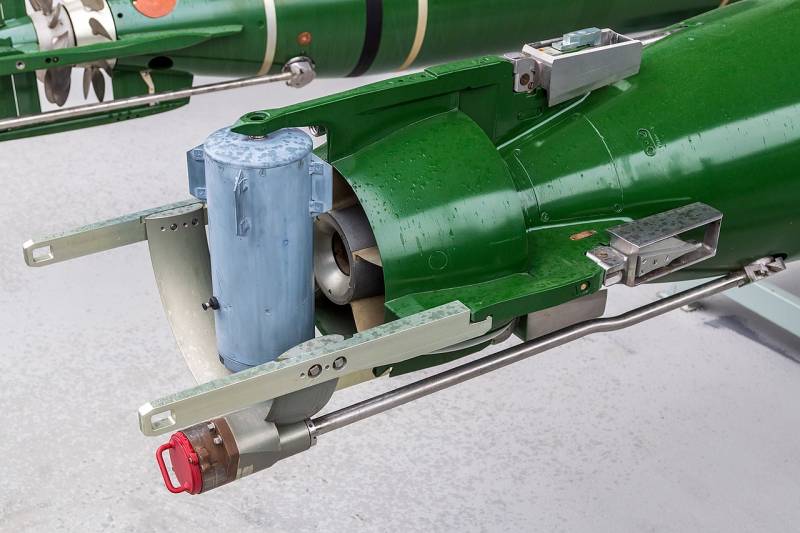
Torpedo tail with jettisonable cable spool
In all cases, the torpedo has a water-jet propulsion device in the form of a propeller in a rigidly fixed annular channel. There are two modes of engine operation and movement with different power and fuel consumption. On the first, the speed reaches 50 knots and a range of 25 km is provided (20 km for a shortened torpedo). The second mode reduces the speed to 40 knots, while the range increases to 50 or 40 km, depending on the modification. The torpedo can dive to a depth of up to 500 m.
“Physicist” is equipped with a combined guidance and control system. An active-passive acoustic homing system (SSN) is placed in the head part. The main antenna of the SSN is placed directly on the radome. Above it on the body there is another, smaller one. The torpedo is capable of detecting surface targets at ranges of 1200 m and underwater targets from 2500 m. The SSN also “sees” the wake within 350 seconds. after passing the target.
The torpedo is additionally equipped with remote control equipment. In this case, the carrier ship can exchange data with the torpedoes and control its actions. Control is carried out via an unwinding fiber optic cable. In the tail compartment of the torpedo there is a reel with 25 km of cable. Another 5 km of cable is wound on an external reel, which the torpedo tows behind itself.
Several operating modes are provided. The torpedo can be controlled from the carrier and, upon command, go to the target area. There is also a mode of independent movement along a given course with maneuvering and a wake search mode. In all cases, the torpedo's SSN searches for the target and then independently aims at it.
Direct control of depth and course is carried out using four rudders in the tail. The steering wheels are U-shaped and foldable. After leaving the torpedo tube, they unfold and have a swing greater than the caliber of the torpedo. This increases their efficiency and reduces noise during movement.
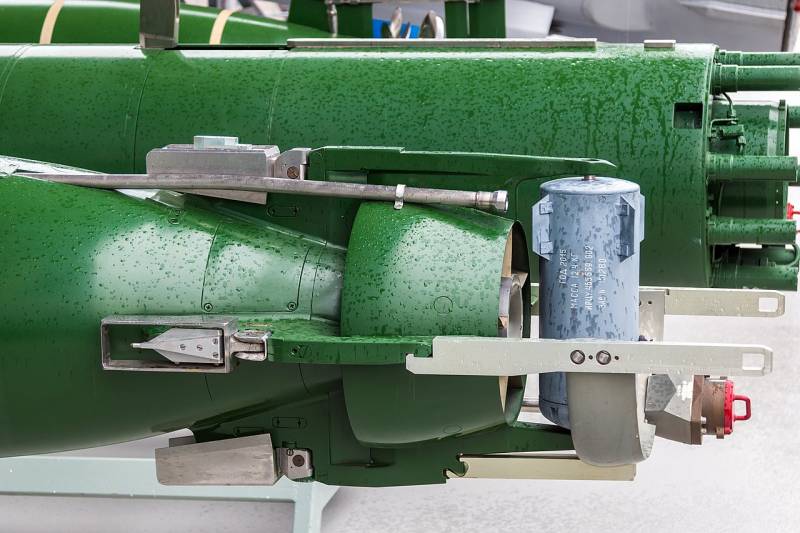
The combat charging compartment “Physics” is made modular. A warhead weighing up to 300 kg of one type or another is installed in the available volume. The charges differ in the mass and type of explosive, detonation time, etc. The torpedo is standardly equipped with contact and non-contact hydroacoustic target sensors, which ensure detonation in the event of a direct hit or passage at a distance from the target.
UGST carriers of all modifications can be any Russian surface ships and submarines equipped with 533-mm torpedo tubes. To fully utilize all functions, the installation of appropriate control devices is required. From the point of view of operation and application, the “Physicist” is not fundamentally different from other domestic torpedoes of modern types.
Modern weapons
The UGST “Physicist” product and its modifications are the latest domestic developments in the field of torpedo weapons, brought into service and used by the troops. With their help, older models are now being replaced. Thus, several years ago it was reported about plans to decommission USET-80 torpedoes and completely replace them with “Cases”.
Torpedoes of new models enter arsenals and take their place on ships and submarines, thanks to which the Navy gains new capabilities in the fight against surface and underwater targets. “Physicist” and its variants differ from older torpedoes in their significantly increased range, improved detection and targeting characteristics, the presence of several operating modes, etc. With all this, at the early stages of design, measures were taken to simplify further improvement of the design and increase all the main characteristics.
Thus, at the moment, torpedoes of the UGST series are the most successful and advanced developments of their class. At the same time, domestic torpedo production does not stand still. New versions of Physics may already be in development, taking advantage of the design's modular potential. In addition, the start of work on a fundamentally new family of such weapons cannot be ruled out. However, until the appearance of serial torpedoes of this kind, a significant place in the arsenals of the Russian Navy will remain with the UGST.
Information